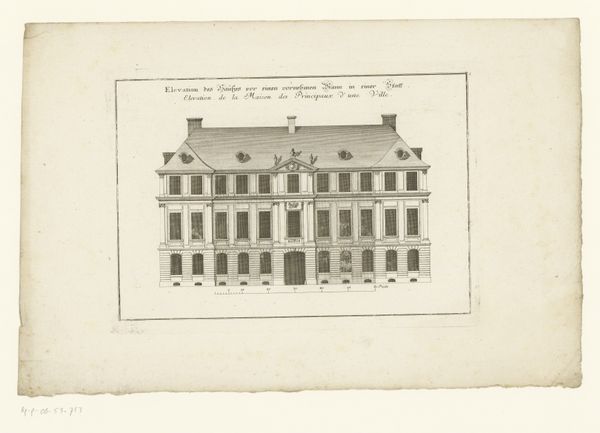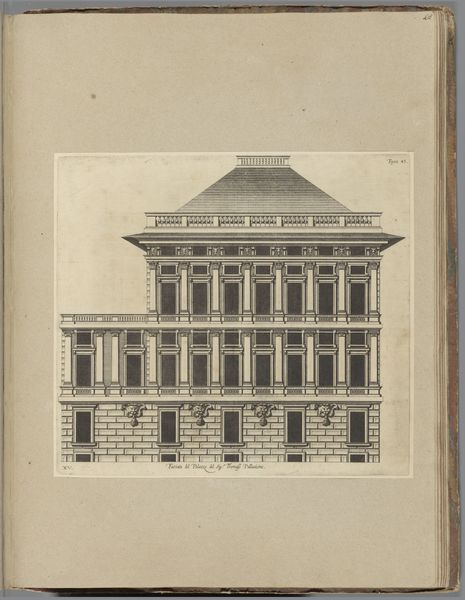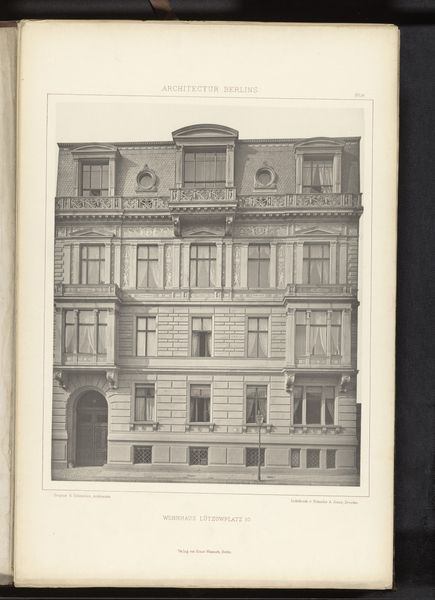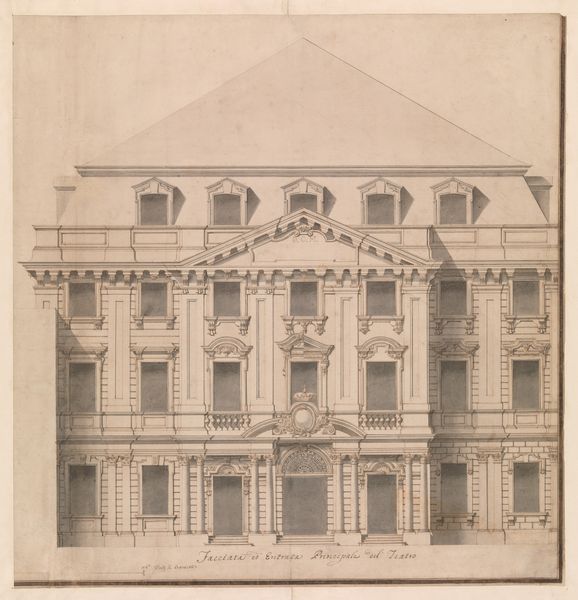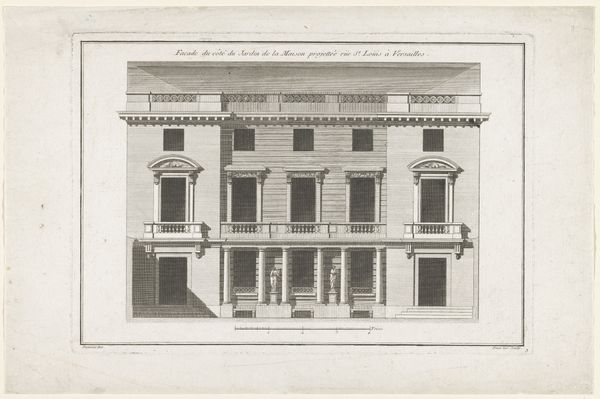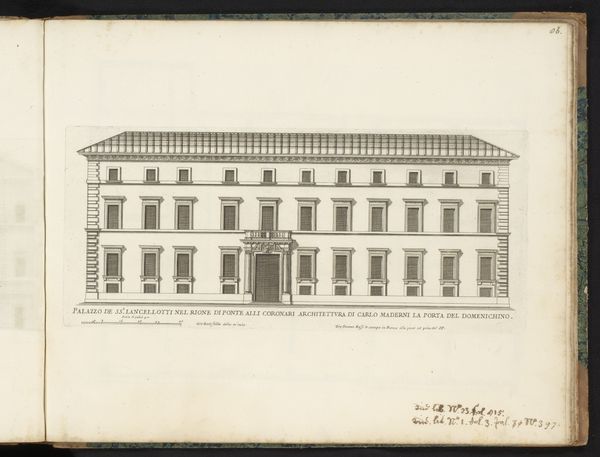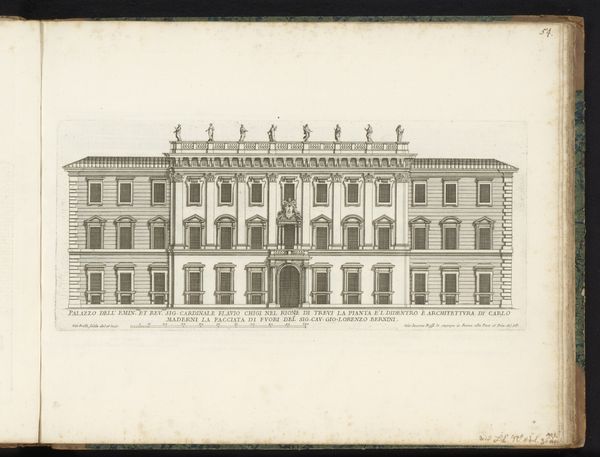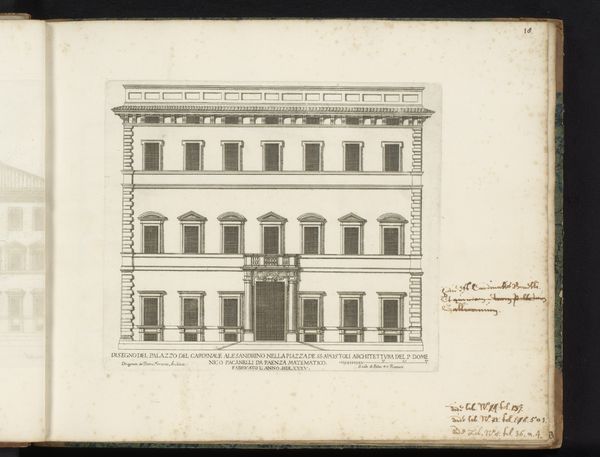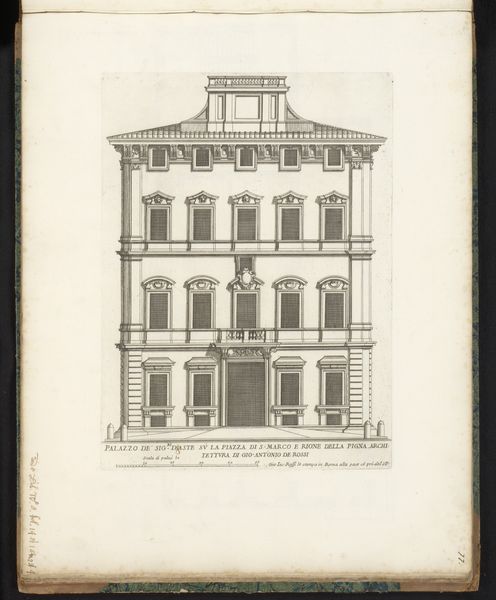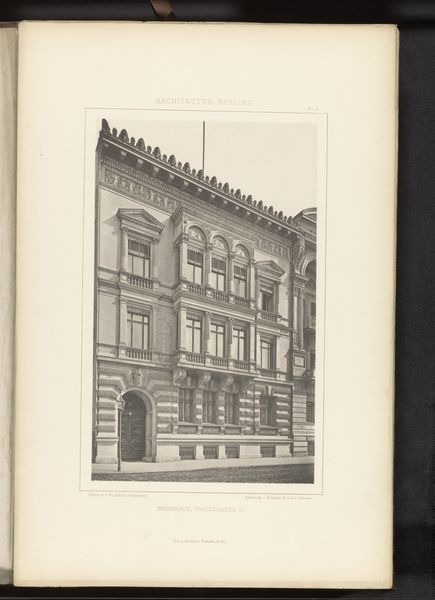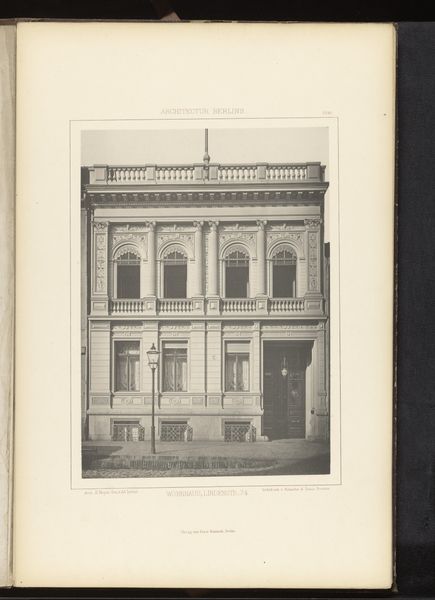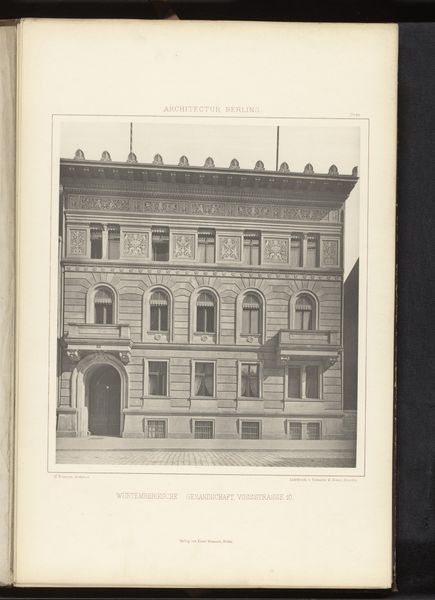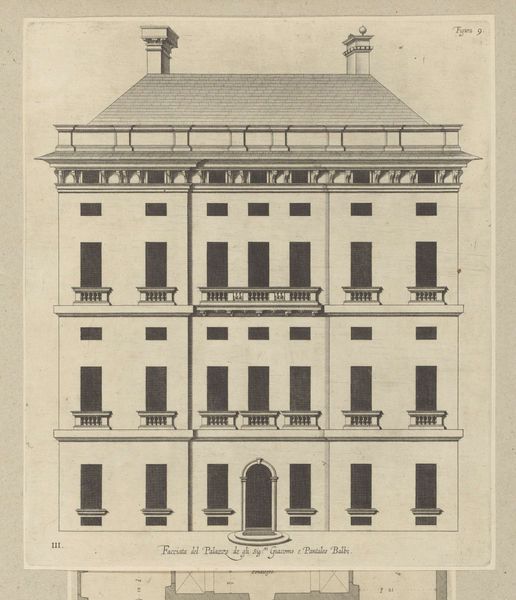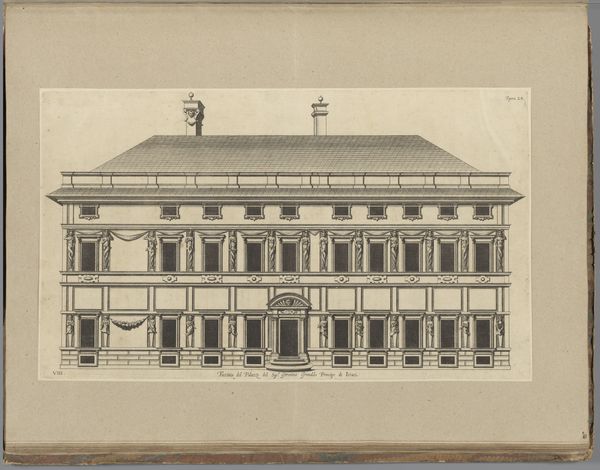
Opstand van de façade van het Palazzo del Melograno te Genua 1622
0:00
0:00
drawing, paper, ink, architecture
#
drawing
#
baroque
#
paper
#
ink
#
cityscape
#
architecture
#
building
Dimensions: height 357 mm, width 302 mm, height 583 mm, width 435 mm
Copyright: Rijks Museum: Open Domain
Curator: This meticulously rendered drawing offers a fascinating glimpse into early 17th-century Genoese architecture. We're looking at Nicolaes Ryckmans' "Opstand van de façade van het Palazzo del Melograno te Genua," created around 1622. Editor: My first impression is one of stark precision, almost sterile. It feels less like a celebration of the building and more like a blueprint, emphasizing function over artistic expression, don't you think? The severe geometry and the monochrome ink work enhance this effect. Curator: That severity, in part, stems from the intent. Ryckmans wasn’t just sketching; these architectural drawings served as crucial documents within a network of architects, patrons, and builders, circulating throughout Europe. They influenced the transmission of design ideas and shaped building practices of the era. Editor: Right. The labor behind this is remarkable. The act of transferring this architectural idea onto paper demanded considerable skill, precision with ink and paper but to what end? Were these designs just aesthetic exercises for elite clients? Or practical documents, directing artisans and construction workers in Genoa? Curator: It's both. Consider Genoa's social and economic landscape at the time. These palazzi weren’t merely homes; they were powerful symbols of wealth and authority within a highly competitive merchant class. The public display was integral to reinforcing family prestige, with meticulous design influencing how a family's influence was seen and experienced. Editor: So the façade became a crucial stage. But look at the texture Ryckmans coaxes out of a simple medium, paper and ink. You can almost feel the weight of the stone, and understand what would be involved to create and build it. Curator: And beyond its aesthetic impact, the drawing provides invaluable historical data—the placement of windows, the dimensions of the façade, decorative motifs—all offering clues to the political and social underpinnings of Genoese society. These details become embedded in the cultural narrative. Editor: It raises important questions about who controls these public facing facades, and who controls the making of them, the artisan, or the client? Curator: A vital reminder that a seemingly simple drawing conceals layers of cultural meaning. It underscores the essential function of the artist-draftsman within power networks, with a direct influence on the look of the built world. Editor: Indeed. Peeling back that initial sense of cold precision reveals a rich and surprisingly turbulent history embedded in paper and ink.
Comments
No comments
Be the first to comment and join the conversation on the ultimate creative platform.
